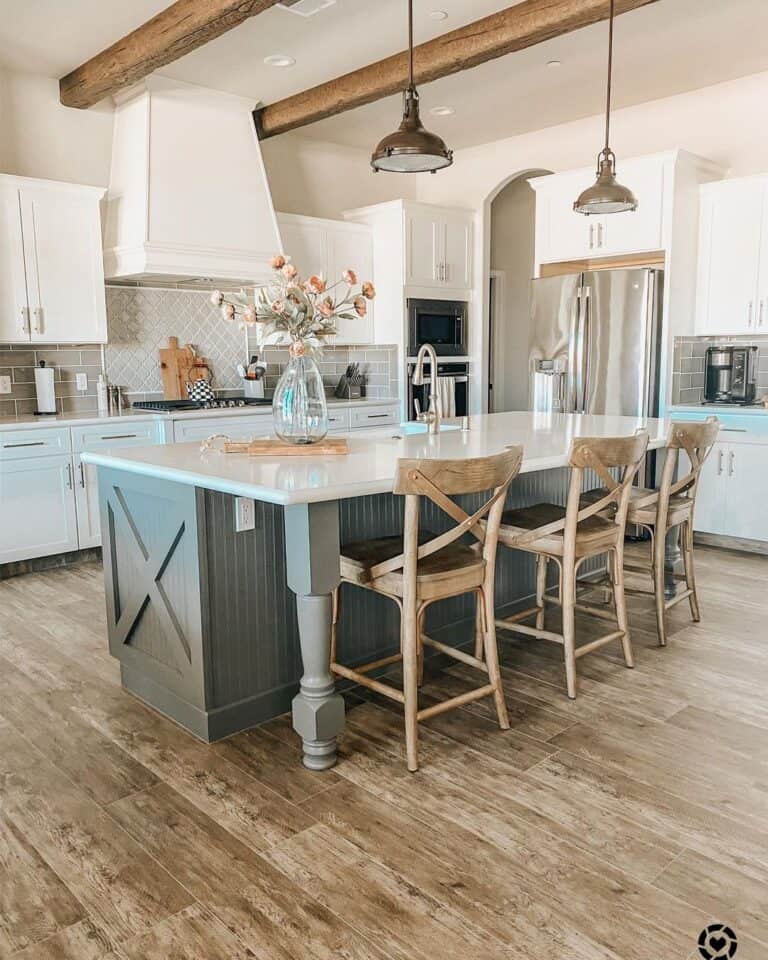Crucial Elements to Take Into Consideration When Choosing Legs For Cooking Area Island
Picking the proper legs for a kitchen area island entails a careful assessment of numerous factors that can dramatically influence both performance and aesthetic charm. As we explore these components, it comes to be clear that each decision can have significant ramifications for the general kitchen area experience.
Material Options
When choosing legs for a cooking area island, recognizing the different material alternatives is necessary for attaining both aesthetic charm and architectural stability (Legs For Kitchen Island). The selection of product significantly affects not only the longevity of the island but likewise its total layout and functionality
Steel legs, usually made from stainless steel or functioned iron, add a modern and commercial feeling while making sure longevity and stability. These materials are immune to wear and can sustain significant weight, making them ideal for bigger islands.
Another alternative is engineered products, like MDF or plywood, which can be a lot more affordable while still providing a range of coatings. They may not provide the exact same level of security as strong timber or steel. Legs For Kitchen Island. Finally, materials such as acrylic or glass can develop a modern appearance, though they might need extra support to make sure security.
Eventually, the option of product for kitchen island legs must align with the desired performance and the total style of the cooking area.
Design and Style

When thinking about design, the form and surface of the legs are essential. Tapered legs can give a feeling of agility and style, while thicker, more robust legs can convey strength and stability. In addition, the surface-- be it painted, stained, or natural-- ought to enhance the cabinetry and kitchen counter products to develop a unified appearance.
In addition, the layout of the legs can likewise show personal taste. Personalized or decorative legs, such as those featuring elaborate makings or one-of-a-kind geometric forms, can work as centerpieces, including personality and character to the kitchen. Eventually, the ideal selection will certainly not only improve functionality yet also raise the aesthetic appeal, making the cooking area island a standout function of the home.
Elevation Considerations
Choosing the ideal elevation for kitchen area island legs is vital, as it straight influences both capability and comfort. The conventional height for a kitchen area island normally varies from 36 to 42 inches, aligning with usual countertop heights.

It is additionally necessary to make up users' heights and choices. Personalizing the height can ensure a comfy experience for all member of the family, making the kitchen area island a much more practical and delightful room.
Weight Support
Making sure adequate weight support for kitchen area island legs is vital for both safety and capability. The kitchen island usually serves numerous functions, including food prep work, eating, and additional storage, requiring a robust support structure. When selecting legs, it is look these up vital to take into consideration the overall weight capability needed based upon the island's planned use and the products that will be positioned on it.
The selection of material for the legs plays a considerable duty in their weight-bearing capacities. Solid timber, metal, and sturdy compounds normally offer superior toughness contrasted to lighter materials. Furthermore, the design of the legs-- whether they are straight, tapered, or have a pedestal type-- can influence their ability to distribute weight successfully across the framework.
Additionally, the leg positioning should be strategically planned to enhance stability. Legs positioned at the edges or with a wider base can much better sustain larger lots. Constantly get in touch with the supplier's requirements pertaining to lots restrictions to make sure that the legs can maintain the designated weight without compromising safety. In recap, picking kitchen area island legs with ample weight support is vital for creating a practical and risk-free culinary room.
Installment and Maintenance
Correct setup and upkeep of kitchen area island legs are critical for making sure longevity and security. To start, it is vital to follow the maker's standards during installment. This frequently entails securing this website the legs to the island base making use of suitable bolts, ensuring that the legs are level and lined up. Making use of a level tool can aid prevent wobbling and boost the total aesthetic charm of the cooking area island.
When mounted, normal upkeep is necessary to preserve the integrity and appearance of the legs - Legs For Kitchen Island. For wooden legs, periodic cleaning with a damp cloth and application of appropriate wood polish can avoid wetness damage and preserve their surface. Metal legs may require a gentle cleaning solution to remove oil and crud, adhered to by a completely dry towel to avoid rust formation
Furthermore, examine the legs routinely for indicators of wear or damage, such as splits or loose joints. Tightening up screws or bolts as required can also lengthen the lifespan of the legs. By sticking to these installation and upkeep practices, home owners can guarantee that their cooking area island remains tough and visually appealing for many years to come.
Final Thought

Aesthetic coherence is vital in picking the style and design of legs for a kitchen area island, as these aspects substantially affect the total ambiance of the space. Tapered legs can offer a feeling of agility and sophistication, while thicker, extra durable legs can convey strength and stability.Choosing the suitable height for kitchen area island legs is important, as it straight affects both performance and convenience. In summary, choosing kitchen island legs with sufficient weight support is important for creating a functional and safe cooking room.
In verdict, choosing legs for a kitchen area island requires careful consideration of various variables, consisting of product choices, style, elevation, weight assistance, and setup.